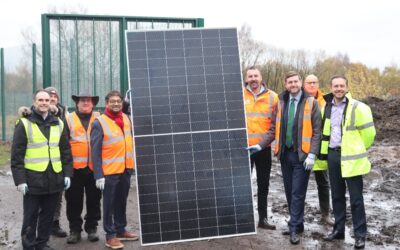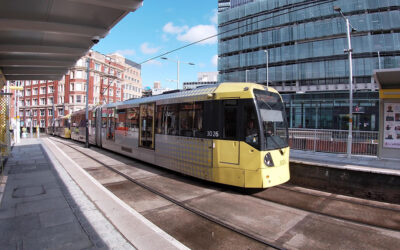This year Earth Day’s theme is “invest in our planet”. Now is the time to act on the climate crisis. It’s time for change and action to protect our environment, health and life as we know it. Businesses, governments and individuals must work together to drive change and Greater Manchester is a great example of a city-region where this is taking place. Whether it’s searching for nature-based solutions or alternative energy sources, Greater Manchester is leading the way in the race to net-zero and investing in our planet.
To celebrate Earth Day, we’re rounding up some of the ways in which Greater Manchester is investing in our planet and driving the green revolution:
Focus on Renewable Energy
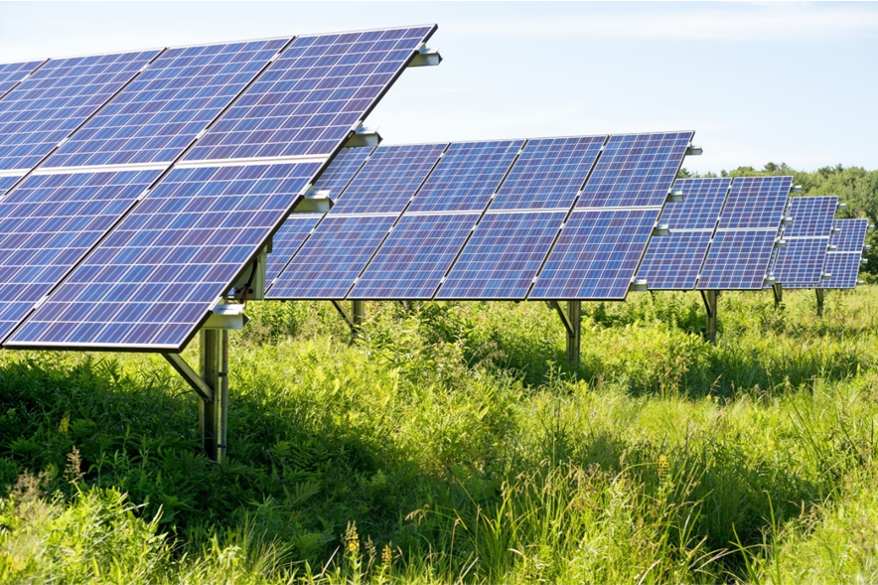
A new solar farm will be built in Little Hulton, Salford
As part of Greater Manchester’s commitment to investing in our planet, our city region is prioritising renewable and natural energy sources to stop use of fossil fuels and irreparable damage to our environment. This month a new Energy Innovation Agency is set to launch which will lead the way in transforming energy systems, support innovators and accelerate the journey to becoming net-zero.
However, across Greater Manchester plans to accelerate a switch to greener energy are already underway. This year a new solar farm is being built in Little Hulton in Salford and there are plans for a new £1.5 million hydroelectric scheme to be built in Salford too. Combined, both projects will generate enough power to run over 600 homes in the city.
Greater Manchester is also a leader in sustainable hydrogen production, with Cadent Gas, Electricity North West, Carlton Power, Trafford Council and Greater Manchester Combined Authority joining forces to set up the city’s first low-carbon hydrogen hub. The region is also attracting names like First Hydrogen and Cadent Gas investing in the region to switch gas mains and create hydrogen-powered vehicles.
Building More Urban Parks
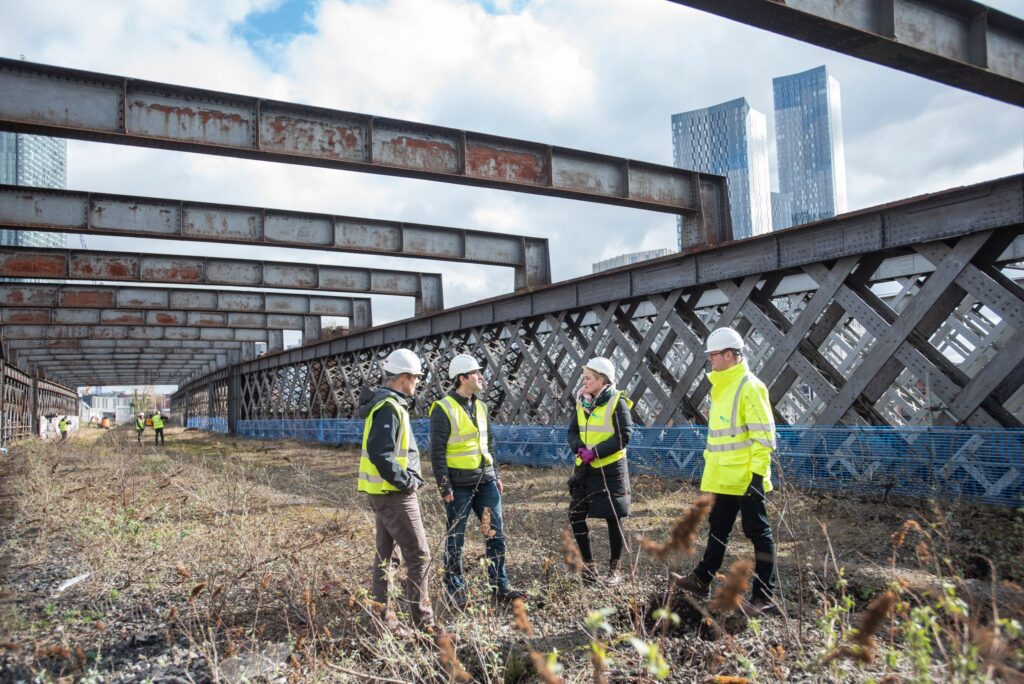
Work on the National Trust’s Castlefield Viaduct has begun
Greater Manchester is also investing in our planet by investing in nature and creating more urban parks. The pandemic especially has reinforced the need for green spaces in urban areas and, as Greater Manchester has declared a biodiversity emergency, these spaces are becoming even more pivotal. Mayfield Park will be Manchester City Centre’s first public park. Spanning 6.5 acres, the park will encourage biodiversity in the region from the banks of the River Medlock to the plants and spaces created within the park. The park will have a sustainable irrigation system using pre-existing wells.
The National Trust is also creating a new urban sky park for Manchester, by turning a 330-metre steel viaduct into a park. Trees, flowers and shrubs will attract wildlife to the Castlefield area of the city centre. The Castlefield Viaduct greening project will house different garden areas, bringing people closer to nature.
It’s not just Manchester City Centre that is investing in green spaces, Stockport’s new transport interchange will feature the town’s first new green space in decades. Stockport Interchange will be home to a state-of-the-art public park on its roof. The new two-acre rooftop park will encourage wildlife, biodiversity and will promote sustainable transport by providing safer routes for pedestrians and cyclists.
Investing in Sustainable Transport
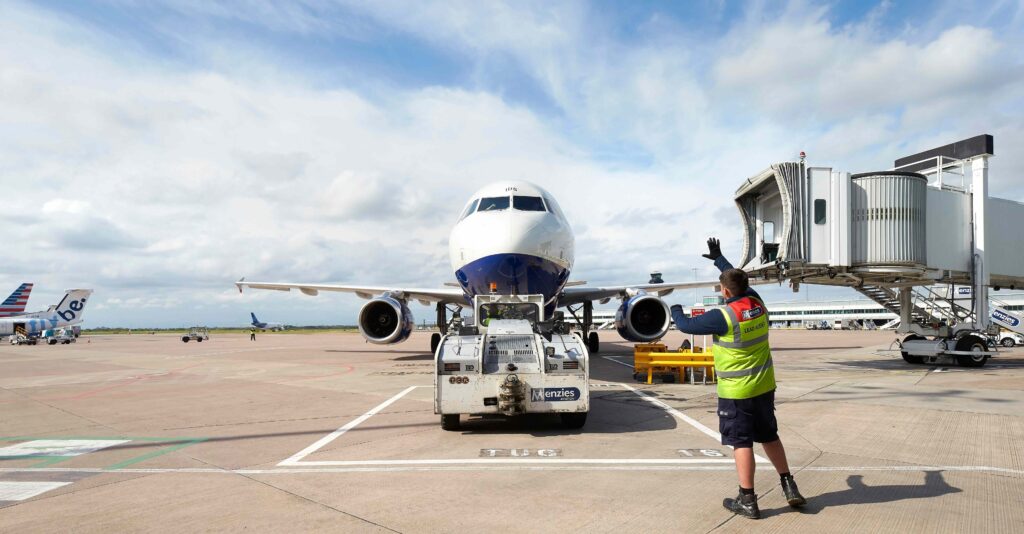
Manchester Airport has ambitions to become the first UK airport with a sustainable jet fuel supply
Another way in which Greater Manchester is investing in our planet is by prioritising a shift to sustainable transport as opposed to using petrol and non-renewable fuels. Rethinking our region’s existing transport system could help us to address economic, social and environmental challenges for years to come. The Bee Network is our vision which will interlink trams, buses, cycling and walking by 2024 and will incorporate rail by 2030. This network will offer a more attractive alternative to a car and will improve our health and air quality as Greater Manchester is committed to having a fully electric system by the end of this decade.
As part of our commitment to sustainable travel, many areas of Greater Manchester are prioritising the improvement of cycling routes and pedestrianising streets like those in the Northern Quarter and Ancoats to create safer environments and reduce travel pollution. Plus, Manchester Airport has revealed its ambitions to become the first airport in the UK to have a direct sustainable jet fuel supply
Just last month, Greater Manchester secured over £35million to enhance its green bus fleet which should introduce a fleet of green buses to the region. With the support of additional funding from the GMCA, there will be 170 zero-emission buses running from Stockport’s new interchange by 2024.
Pioneering Innovation in Nature-Based Solutions

The Living Lab at Salford University demonstrates nature-based solutions
Greater Manchester is also at the forefront of finding nature-based solutions to help tackle the climate crisis. Through this we’re using the natural resources our planet gives us to solve some of the world’s biggest challenges. The IGNITION Project was established to shed light on how nature-based solutions at scale could have a real impact on energy consumption and contribute to fixing the climate crisis in urban areas.
Along with Greater Manchester’s other leading institutions, Salford University is pioneering innovation with its Living Lab and Energy House projects. The IGNITION Living Lab’s main components are a rain garden, green-blue roof, green wall and SuDs trees; interlinking these technologies and solutions gives a unique perspective of how they can work together to support each other.
Energy House, however, looks at the retrofit challenge, and how we can improve existing housing stock. Energy House 2.0 is the largest test and research facility of its kind and is leading the development of new, low-carbon homes and retrofit technologies that can be tested in environmental chambers. These chambers can fit two detached houses and recreate a variety of weather conditions including wind, rain, snow and solar radiation.
Attracting Likeminded Thinkers
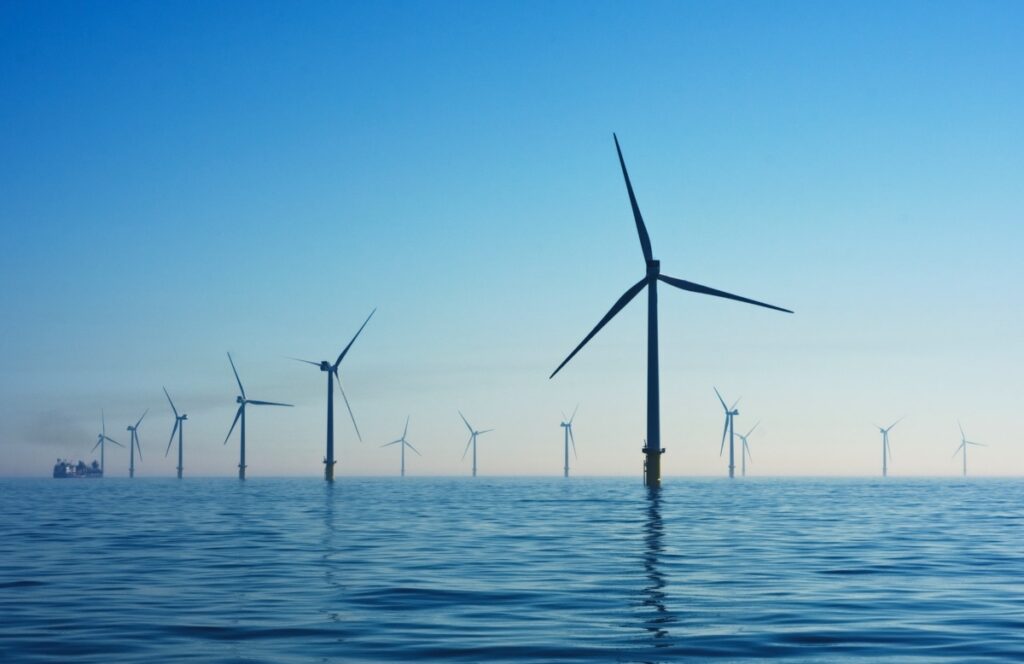
Global Offshore Wind 2022 will be coming to Manchester in June
One of the most significant ways in which Greater Manchester can lead the way in the race to net zero and investing in our planet is to position itself at the forefront of global issues. This means being open to collaboration and working with other city regions and even countries to solve challenges. Greater Manchester’s International Strategy will help us to push this and work with like-minded individuals. We are also attracting huge events to the city like Global Offshore Wind 2022, which will bring together pioneers in offshore and renewable energy to show their innovations and discuss solutions to the energy crisis. Having events like this in the city will allow Greater Manchester’s academics, green innovators and leaders to have their voices heard and to join in with global talking points.
Therefore, there are many ways in which Greater Manchester is placing our city region at the fore of Green Innovation. This Earth Day, as we recognise the importance of investing in nature, whether that’s through creating green spaces to encourage biodiversity or prioritising a shift to greener, natural energy sources, it’s great to reflect on the progress our city region has made so far.
While we recognise there is a long way to go to reach Greater Manchester’s ambition of becoming net-zero by 2038, as our region continues to invest in nature we can continue to contribute solutions to the global climate crisis.
For regular updates on how Greater Manchester is progressing to become a greener city region, make sure you follow Greener Greater Manchester on Twitter and LinkedIn.
To view more stories about Greater Manchester’s progress towards Net-Zero, click here.


